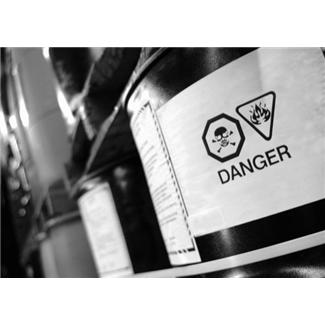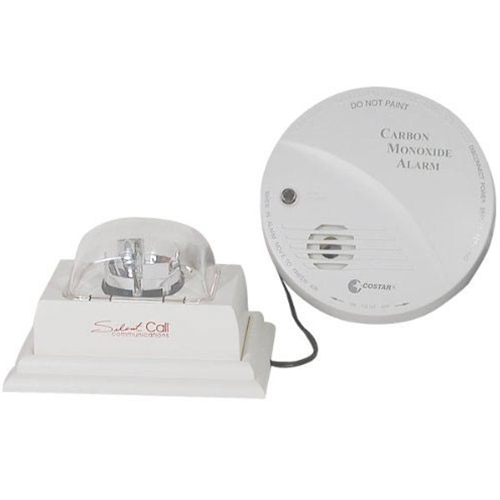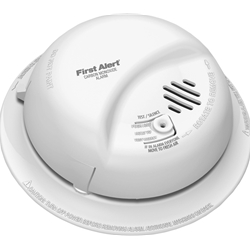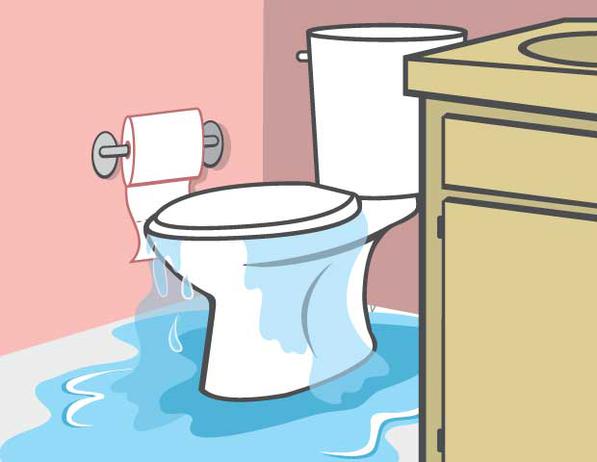You may have heard that carbon monoxide poisoning is considered “the silent killer,†but do you know what carbon monoxide (CO) gas is, or how to recognize the signs of carbon monoxide poisoning? According to the CDC, more than 400 Americans die from unintentional carbon monoxide poisoning each year; more than 20,000 visit the emergency room; and more than 4,000 are hospitalized due to CO poisoning!
To avoid becoming one of these statistics, take a minute to learn more about CO poisoning and how to protect yourself and family by eliminating sources of CO at home and installing a carbon monoxide detector that will warn you if CO levels get dangerously high.
What is Carbon Monoxide?
Carbon monoxide is a poisonous gas with no smell, taste or color, making it difficult to so detect you can inhale it without even realizing it! Â When there is too much carbon monoxide in the air you breathe, your ability to absorb oxygen can greatly diminish, leading to serious tissue damage that can cause sudden illness and death.
What Creates Carbon Monoxide?
Carbon monoxide is produced by vehicles, appliances and other devices that generate combustion fumes, such as those that burn gas or other petroleum products, wood and other fuels. Examples include cars and trucks, small gasoline engines, stoves, lanterns, burning charcoal and wood, and gas ranges and heating systems.  The danger occurs when too much carbon monoxide accumulates in an enclosed or semi-enclosed poorly ventilated space.
What are the Symptoms of Carbon Monoxide Poisoning?
 The longer you inhale CO gas, the worse your symptoms will be. You may lose balance, vision and memory. Eventually, you may lose consciousness. This can happen within two hours if there is a lot of CO gas in the air.
The longer you inhale CO gas, the worse your symptoms will be. You may lose balance, vision and memory. Eventually, you may lose consciousness. This can happen within two hours if there is a lot of CO gas in the air.
A dull headache is the most common symptom of carbon monoxide poisoning. Other common symptoms include:
- Dizziness and nausea (feeling sick)
- Vomiting (being sick)
- Tiredness and confusion
- Stomach pain
- Shortness of breath and difficulty breathing
- Blurred vision
Â
How to Prevent Carbon Monoxide Exposure
According to the CDC, you can help prevent CO poisoning by following these steps:
- Have your heating system, water heater and any other gas, oil, or coal burning appliances serviced by a qualified technician every year.Â
- Install a battery-operated or battery back-up carbon monoxide detector in your home and check or replace the battery when you change the time on your clocks each spring and fall. If the detector sounds, leave your home immediately and call 911.Â
- Seek prompt medical attention if you suspect CO poisoning and are feeling dizzy, light-headed, or nauseous.Â
- Don’t use a generator, charcoal grill, camp stove, or other gasoline or charcoal-burning device inside your home, basement, or garage or near a window.Â
- Don’t run a car or truck inside a garage attached to your house, even if you leave the door open.Â
- Don’t burn anything in a stove or fireplace that isn’t vented.Â
- Don’t heat your house with a gas oven.
Choosing a Carbon Monoxide Detector
Modern carbon monoxide detectors trigger an audible alarm based on an accumulation of carbon monoxide over time. There are three basic CO detector technologies, each with a different type of sensor – metal oxide, biomimetic and electrochemical. While there are differences between these technologies, each type is tested and approved for operation.  Here are some tips on choosing and installing a CO detector:
Â
 Battery-Backup is Critical
Battery-Backup is Critical
Most carbon monoxide detectors require a continuous power supply. Whether you choose an electrically hard-wired CO detector or the type that plugs into an AC outlet, make sure it has back-up battery power so it will continue to operate even during power outages. It should also have a “low battery†warning alarm.
Â
Protect the Hard of Hearing
If you or someone in your family is deaf or has hearing loss, protect them with a carbon monoxide detector with a visual alarm, like the Silent Call Carbon Monoxide Detector with Strobe Light or the hard-wired Kidde Lifesaver Carbon Monoxide Alarm with Strobe.
Â
Combination Smoke & CO Detectors Do Double-Duty
Many manufacturers offer carbon monoxide detectors that also function as smoke detectors, so you can protect your family from both threats with one device. Look for combination detectors that activate independently and have distinctly different alarm signals for smoke or high CO levels, such as the Gentex Hard Wired Combo Smoke and CO Alarm.
Placement is Key
 No matter which type of CO detector you choose, proper placement and installation is essential for proper functioning.
No matter which type of CO detector you choose, proper placement and installation is essential for proper functioning.
- Place detectors in or near sleeping areas, where the sound of an alarm will easily wake people up.
- Place detectors on each level of a residence.
- To ensure that the alarm is heard throughout the house, choose carbon dioxide detectors that are “interconnectable†so that all of the alarms in your home will sound when one of them is triggered by a CO event. The BRK Electronics Hard Wired T4 Carbon Monoxide Alarm is an example of an interconnectable alarm.
- For added protection, place a carbon monoxide detector 10 to 15 feet from the furnace as well as other fuel burning sources.
Connect to Your Home Security System for Ultimate Protection
If your residence is already equipped with a home security system or autodialer, choose compatible carbon monoxide detectors that you can connect to the system so you will be notified locally and remotely of high CO levels.
Who is at Risk of Carbon Monoxide Poisoning?
All people and animals are at risk for carbon monoxide poisoning and is especially dangerous for people who are sleeping or intoxicated who can die from CO poisoning before ever experiencing symptoms. Â And, certain groups of people are more susceptible to its effects, including unborn babies, infants, young children and people with chronic heart disease, anemia, or respiratory problems.
But you can protect everyone in your household from this from this potentially lethal illness by following the steps to eliminate sources of carbon monoxide poisoning at home; Â by knowing the signs of carbon monoxide poisoning; and by installing carbon monoxide detectors on every level of your house.
Sources:Â Mayo Clinic; CDC; NHS UK



